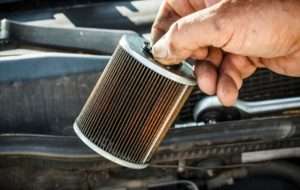Maintaining the fuel filter is a critical aspect of diesel engine care, and for the 6.7 Powerstroke engine, this is no different. The 6.7 Powerstroke is a robust and heavy-duty engine used in Ford Super Duty trucks, and its performance is highly dependent on a clean and efficient fuel system. Over time, diesel fuel can contain contaminants that can clog the fuel filter, leading to reduced engine performance and potentially causing damage. Hence, timely maintenance or replacement of the fuel filter is imperative for the health of the engine.
Understanding the 6.7 Powerstroke fuel filter role is key to appreciating its significance. It directly impacts the functionality of the fuel system, which is essential for the engine’s combustion process. With the option of stock or aftermarket fuel filters, owners must make informed choices based on quality, compatibility with their vehicle model and year, and the demands of their driving conditions. Furthermore, proper installation and regular maintenance are necessary to ensure that the vehicle’s engine runs smoothly.
Jump to
- 1 Understanding the 6.7 Powerstroke Fuel System
- 2 Stock vs Aftermarket Fuel Filters
- 3 Fuel Filter Replacement for 6.7 Powerstroke
- 4 Installation and Maintenance
- 5 Enhancing Fuel Filter Performance
- 6 Models and Years Specifics
- 7 Frequently Asked Questions
- 7.1 How often should the fuel filters be replaced in a 6.7 Powerstroke engine?
- 7.2 What are the symptoms indicating a fuel filter issue on a 6.7 Powerstroke?
- 7.3 Can the fuel filter housing on a 6.7 Powerstroke be easily replaced, and what is the process?
- 7.4 Is there a notable performance difference with aftermarket fuel filter upgrades for the 6.7 Powerstroke?
- 7.5 What steps are involved in converting to an H&S fuel filter on a 6.7 Powerstroke?
- 7.6 Are the primary and secondary fuel filters interchangeable in a 6.7 Powerstroke system?
Key Takeaways
- The 6.7 Powerstroke engine requires regular fuel filter maintenance for optimal performance.
- Choices between stock and aftermarket fuel filters depend on individual vehicle needs and quality considerations.
- Correct installation and upkeep are essential for sustaining engine health and efficiency.
Understanding the 6.7 Powerstroke Fuel System
https://www.youtube.com/watch?v=mdF6ka9nwxI&embed=true
The 6.7 Powerstroke fuel system is integral to the engine’s performance, continuously delivering clean fuel to ensure efficiency and longevity.
Components of the Fuel System
The fuel system of the Ford 6.7 Powerstroke comprises several key components. The fuel tank acts as the reservoir, while high-pressure fuel pumps push fuel towards the engine. Precision-engineered fuel injectors deliver the fuel into the combustion chamber. Lines and filters are also pivotal, connecting and cleansing as fuel courses through the system.
- Fuel Tank: Stores the diesel required for engine operation.
- Fuel Pumps: High-pressure pumps that move fuel from the tank to the injectors.
- Fuel Injectors: Dispense the correct amount of fuel for optimal combustion.
- Fuel Lines: Transport the fuel throughout the system.
- Fuel Filters: Remove particulate matter and debris before they reach vital components.
Functionality and Efficiency
The fuel system’s efficiency is paramount for the 6.7 Powerstroke’s performance. The high-pressure pumps escalate fuel pressure to an optimal level before delivery, ensuring that the fuel injectors can atomize diesel effectively, promoting efficient combustion.
- Pressure: High pressure for effective fuel atomization.
- Delivery: Timed and precise fuel injection for optimal combustion.
Importance of Filtration
Proper filtration is critical in maintaining the health and efficiency of the 6.7 Powerstroke fuel system. The fuel filters play a crucial role in protecting engine components from contaminants that can cause wear and reduce efficiency.
- Filtration: Essential for removing contaminants from the fuel.
- Protection: Ensures injectors and other key components remain free from debris.
In the 6.7 Powerstroke, maintaining this filtration system is vital not only for the longevity of the injectors but also for the general health of the entire fuel system.
Stock vs Aftermarket Fuel Filters
Choosing between stock and aftermarket fuel filters for a 6.7 Powerstroke engine involves considering the balance between quality assurance and potential performance enhancements.
Ford Motorcraft Fuel Filters
Ford Motorcraft fuel filters are engineered specifically for Ford engines, ensuring compatibility and reliability. They typically target 2 microns or larger for particulate filtering, which meets the stringent quality standards set by Ford. These filters are designed to work seamlessly with the 6.7 Powerstroke, providing a level of assurance for the vehicle owner that the filter will perform as expected out of the box.
Benefits of Aftermarket Filters
Aftermarket fuel filters offer a range of benefits, including the potential for cost savings and increased availability. Some may offer filtration levels that are more refined, potentially below the 2-micron threshold, which might contribute to improved engine performance and longevity. Additionally, aftermarket options may provide advanced filtration technology or materials that claim to enhance engine protection beyond the original specifications.
Comparing Filtration Standards
- Motorcraft Standards:
- Typical filtration level: 2 microns
- Designed for exact OE fit and function
- Aftermarket Standards:
- Variable filtration levels, some less than 2 microns
- Diverse selection caters to a range of performance needs
While both stock and aftermarket fuel filters must meet essential quality standards, the exact metrics may differ. Ford Motorcraft filters conform to the specifications necessary for a 6.7 Powerstroke, which ensures a predictable level of performance. Aftermarket filters, on the other hand, can vary widely in filtration capability, with some boasting improved efficiency or additional features that surpass the stock offering. It is crucial for owners to consider the filtration standards against their specific requirements and to weigh the benefits and limitations of each option.
Fuel Filter Replacement for 6.7 Powerstroke

Maintaining the fuel filter is critical to the health and efficiency of the Ford 6.7L Powerstroke engine.
Indicators for Replacement
One must be aware of the signs that the fuel filter on a 6.7 Powerstroke requires replacement. These indicators include:
- A noticeable decrease in engine performance or fuel efficiency.
- The truck’s onboard computer triggers a warning or check engine light.
- Observing longer than usual startup times.
- Experiencing engine sputtering, particularly at high speeds.
Choosing the Right Filter
When selecting a replacement fuel filter for the 6.7 Powerstroke, one should ensure compatibility and quality. Factors to consider include:
- OEM Specifications: Filters should meet or exceed original equipment manufacturer (OEM) specifications.
- Reputation: Opt for filters from reputable brands known for reliability and durability.
- Fitment: Verify the filter is designed for the specific model year of the Ford 6.7L Powerstroke to assure proper fitment and function.
Installation and Maintenance
Proper installation and maintenance of the 6.7 Powerstroke fuel filter are crucial for optimal engine performance. Both home replacement and professional installation require attention to detail and adherence to specific steps to ensure the fuel system functions efficiently.
Replacing the Fuel Filter at Home
Home maintenance enthusiasts can replace the fuel filter on a 6.7 Powerstroke with a fuel filter kit, which typically includes all necessary components such as O-rings and a new filter. Before beginning, one should make sure the engine is off and cool. Firstly, locate the fuel filter housing on the engine. It is essential to relieve the fuel system pressure before removing the old fuel filter to prevent fuel spray. One must carefully follow the instructions provided with the fuel filter kit, ensuring that all seals are fitted correctly and that no components are damaged during installation.
- Drain any remaining diesel fuel from the old filter to minimize spillage.
- Carefully remove the old filter and replace it with the new one from the kit.
- Tighten any bolts or fittings according to the specifications provided.
- Prime the fuel system if required, as some diesel engines need manual priming after a filter change.
Professional Installation
For those who prefer professional installation, selecting a reputable service that is familiar with the 6.7 Powerstroke engine is imperative. A mechanic will typically have access to a lift pump and other specialized tools that make the filter replacement process more efficient and less prone to errors. They ensure that the fuel filter is replaced in accordance with the vehicle manufacturer’s guidelines.
- A skilled technician will perform a comprehensive system check post-installation.
- Professional installation might offer the peace of mind of a service warranty.
Regular maintenance, whether done at home or by a professional, keeps the fuel system clean and helps prevent potential engine issues.
Enhancing Fuel Filter Performance
The longevity and efficiency of a 6.7 Powerstroke engine in a Super Duty truck largely depend on maintaining clean fuel. Upgrading the fuel filtration system can significantly enhance performance.
Upgrading with Fuel Filter Kits
Upgrading the fuel filter system with comprehensive fuel filter kits can provide an immediate performance boost. Kits from reputable brands, like AFE, often include advanced filtration media designed to remove the smallest contaminants. Installation of these kits can be straightforward, and they usually come with all the necessary components for a seamless upgrade.
The Role of Lift Pumps in Filtration
Lift pumps are critical in maintaining a steady fuel flow and can help improve the efficiency of the fuel filter. In the context of H&S Motorsports, their lift pumps provide consistent fuel pressure and volume, ensuring that the filtration system can work at peak performance. This is particularly beneficial for engines that demand high flow rates under stressful conditions.
Optimizing with High-Efficiency Filters
For those aiming for optimal performance, high-efficiency filters offer advanced filtration without compromising fuel flow. They are designed to catch finer particles that standard filters may miss, thus protecting the engine’s intricate components. When selecting filters, it is important to consider their micron rating and the specific demands of the Super Duty application to achieve the best results.
Models and Years Specifics
The 6.7 Powerstroke fuel filter replacement process varies slightly based on the model year of the Ford 6.7L Power Stroke Diesel engine. This section focuses on the specific models from 2017 to 2022.
2017-2022 Ford 6.7L Power Stroke Overview
Ford’s 6.7L Power Stroke Diesel engines for the years 2017 to 2022 are known for their robust performance and improvements over previous years. The fuel filter for these models is a crucial component that helps ensure the longevity and efficiency of the engine. Here are some key specifics:
- Engine Years: 2017, 2018, 2019, 2020, 2021, 2022
- Filter Location: The primary fuel filter is located on the driver’s side of the engine block, while the secondary fuel filter is on top of the engine.
- Maintenance Interval: Ford recommends replacing both the primary and secondary fuel filters every 22,500 miles or as indicated by the vehicle’s onboard maintenance notification system.
- Replacement Part Numbers: Specific part numbers for replacement filters should be used to maintain performance and compatibility:
- Primary Filter: FD-4625
- Secondary Filter: FD-4624
Filters for the 2017-2022 range are designed to meet stringent specifications for filtration to protect against contaminants, ensuring the Powerstroke diesel engine runs smoothly. It’s important for owners to adhere to the recommended maintenance intervals and use the correct parts to ensure the health of their 6.7L Power Stroke engine.
Frequently Asked Questions
Proper maintenance and awareness of fuel filter conditions are crucial to the performance of a 6.7 Powerstroke engine. This section addresses common inquiries related to fuel filters in this specific engine type.
How often should the fuel filters be replaced in a 6.7 Powerstroke engine?
In a 6.7 Powerstroke, it’s recommended to replace the fuel filters every 20,000 to 30,000 miles to ensure optimal performance, although this interval may vary based on vehicle usage and fuel quality.
What are the symptoms indicating a fuel filter issue on a 6.7 Powerstroke?
Symptoms of a clogged or damaged fuel filter in a 6.7 Powerstroke may include reduced engine performance, difficulty starting, and inconsistent power delivery, which necessitate a filter inspection or replacement.
Can the fuel filter housing on a 6.7 Powerstroke be easily replaced, and what is the process?
The fuel filter housing on a 6.7 Powerstroke can be replaced by those with mechanical proficiency. The process involves draining the fuel, removing the old housing, and installing the new one while ensuring proper sealing to prevent leaks.
Is there a notable performance difference with aftermarket fuel filter upgrades for the 6.7 Powerstroke?
Aftermarket fuel filters for the 6.7 Powerstroke are designed for enhanced filtration and may offer improved performance. However, the actual difference can vary, and users should choose reputable brands to avoid potential issues.
What steps are involved in converting to an H&S fuel filter on a 6.7 Powerstroke?
Converting to an H&S fuel filter involves removing the stock filter assembly, installing the H&S filter base, and connecting the new fuel lines. The conversion kit typically includes detailed instructions to facilitate this process.
Are the primary and secondary fuel filters interchangeable in a 6.7 Powerstroke system?
The primary and secondary fuel filters in a 6.7 Powerstroke are not interchangeable. Each is designed for a specific location and function within the fuel system and must be replaced with the correct type to maintain engine performance and efficiency.

My name is Tom Harris, founder of this blog. I’m a mechanical engineer with 20 years of experience in the automotive industry. I’m here to help you with your vehicle’s problems, easy fixes and share my insights and experience so that you can enjoy your rides more.

